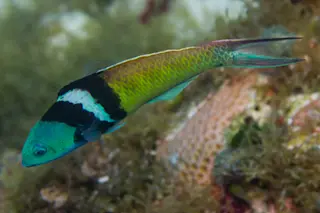You may have heard this rhyme from a beloved “doctor”: “One fish, two fish, red fish, blue fish … some have two feet and some have four.” But Dr. Seuss was no biologist (nor a doctor, for that matter). Otherwise, his fish story might have turned out even stranger.
Instead of two feet, some fish have two sexes. Some change from male to female, and vice versa. And it’s really not that unusual — as many as 500 fish species can change sex in adulthood, along with plenty other animals and plants.
Researchers today are unraveling the many elements that determine the sex of an organism. While genetics are a predominant factor, recent studies point out that stress, trauma and climate can contribute to sex as well. The ongoing work reveals surprising flexibility of sex expression in living creatures and a network of social and environmental cues that influence it.
...














